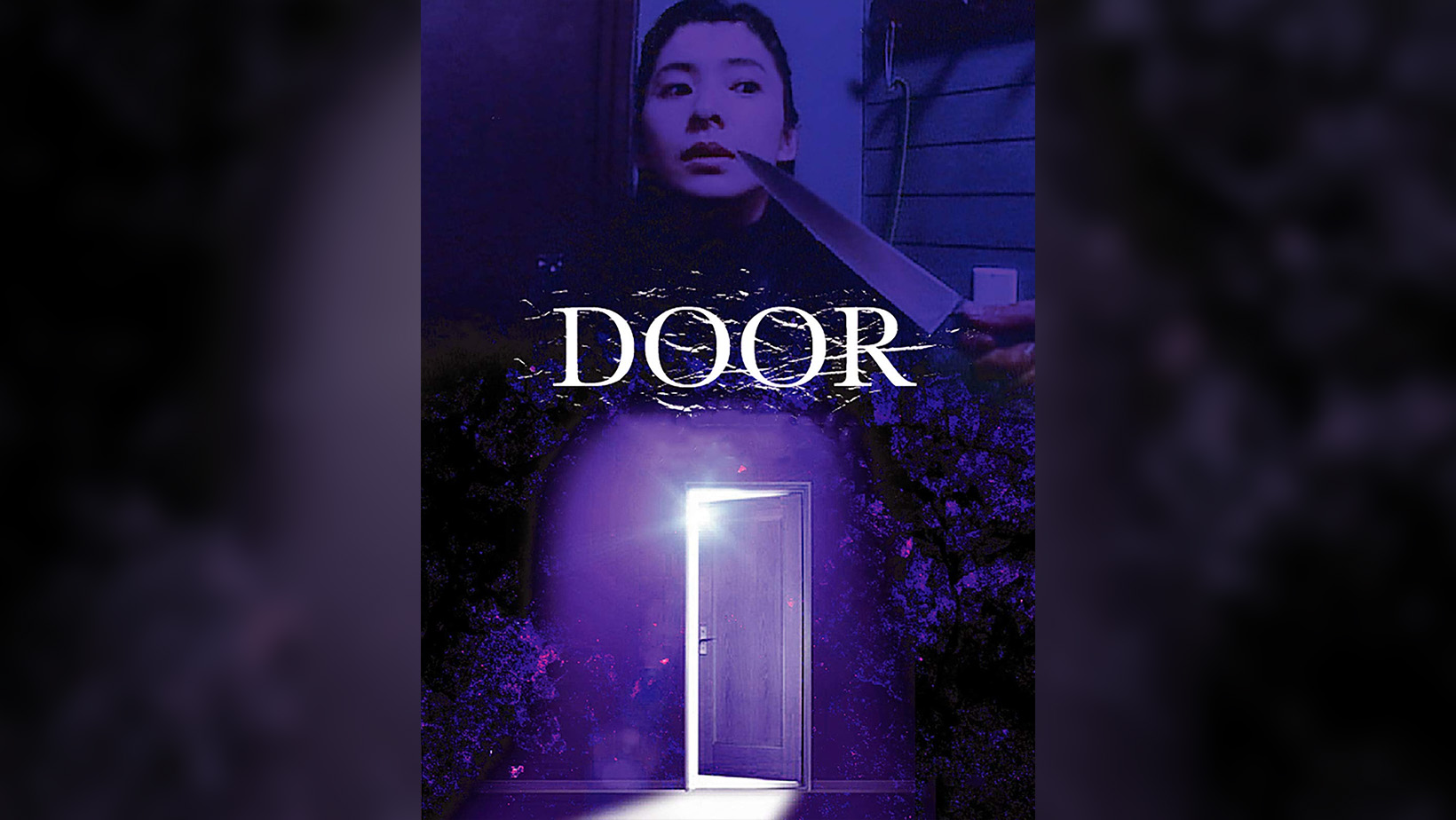

Door is a 1988 Japanese psychological horror thriller written and directed by Banmei Takahashi with additional writing from Ataru Oikawa. Beginning his career in Pinku Eiga in the 70s, Takahashi has worked with some of the greats in the genre, such as Mamoru Watanabe and Koji Wakamatsu to name a few. He is notable for directing such films as Attacking the Girls (1979), Ôkami (1982), and Human Intersection: Dying (1993).
Yasuko, a housewife living in an apartment building with her husband, Satoru, and young son, Takuto, becomes annoyed at a door-to-door salesman’s incessant spam calls. In frustration, she slams her door shut and injures the man’s hand in the process. Although he leaves, this is but the start of Yasuko’s nightmarish harassment.
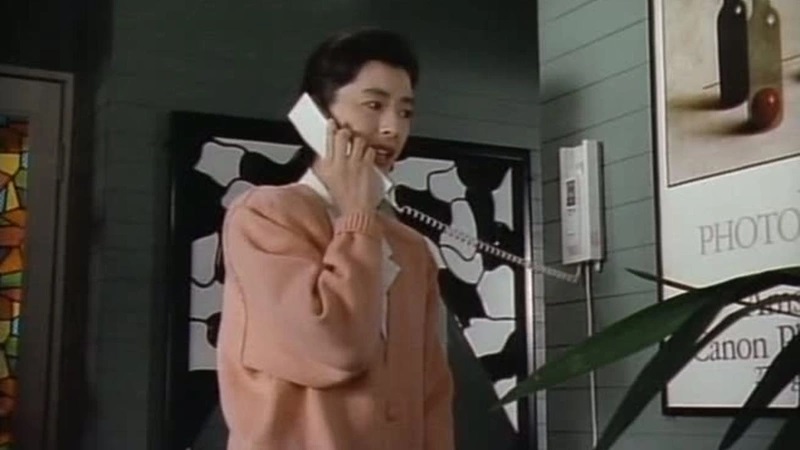
An incredibly oppressive example of J-horror, Door (1988) perfectly fits into the expectations of 80s-style horror synonymous with Japan. Manifesting a gradual atmosphere of tension and dread, the plot’s dark ambiance is masterfully achieved to create a slow-burning tale of fear and paranoia. The gradual intensity of the harassment increases into a crescendo of a unique take on the home invasion subgenre, somewhat reminiscent of the Italian Giallo. However, unlike the whodunit plot twists and red herrings of Giallo, Door (1988) shows its cards from the get-go, disclosing the antagonist’s identity at the film’s very beginning. Despite this, lacking any mystery hardly detracts from the thrilling build-up of tension.
Whilst beginning with typically standard shots, the cinematography of Door (1988) unnoticeably evolves to produce a tight, claustrophobic experience that only intensifies in the film’s third act—culminating in a disorientating yet riveting finale. Furthermore, the film’s score follows suit with its visuals, beginning conventional in its delivery before escalating. Notably, in the third act, the score transforms into a cacophony of short, sharp bursts of sound similar to “a cat on a Casio.” However, this mix of dizzying visuals and disorientating score work in tandem to produce an exhilarating cat-and-mouse chase of life and death.
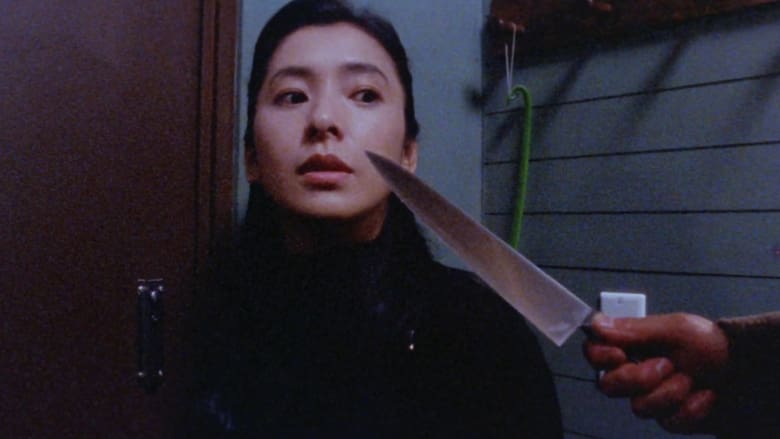
The level of special effects alludes to a particularly grisly depiction of violence, contrary to mainstream J-horror at the time. All attained via practical means, Door’s bloody violence rivals the more exploitive horror points—unflinching in its willingness to let the violent moments linger in memorable moments of shock cinema.
While Door (1988) may not be as well-known as other Japanese horror classics, it is undoubtedly a hidden gem for fans of the genre. Its ability to induce fear through psychological horror and its lingering sense of unease make it a must-see for horror aficionados looking for a genuinely haunting experience.
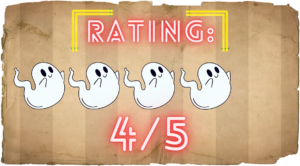
We watched Door (1988) at Fantastic Fest 2023
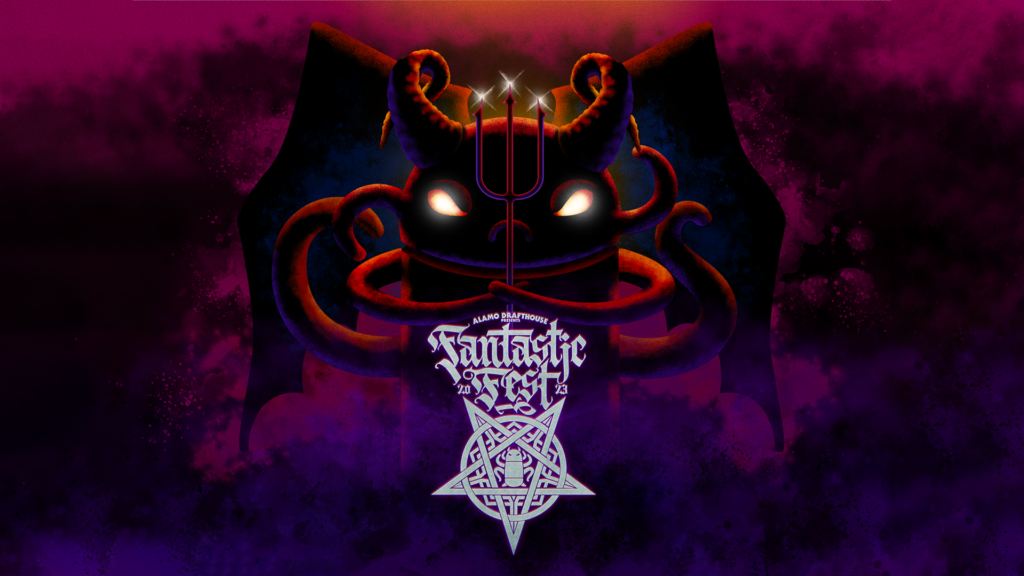
More Film Festival Coverage
Japan seems to have nailed the absurdist comedy, whether that’s big budget to small indie features, no other country is comparable in wit at embracing the peculiar. Available at Japan… Farley Wilder is the local peeping tom in a small New Hampshire town, where his reputation has earned him the interest of a writer, Scarlett, and together the two begin… Mushrooms, originally known as Grzyby, is a Polish 2023 mystery thriller, written and directed by Paweł Borowski. Beginning his directorial career with the short animated comedy Love Gamestation (2001), Paweł… Super Z is a 2021 French horror comedy, written and directed by Julien de Volte and Arnaud Tabarly in their first feature-length directorial debut. The film is loosely based on… Traumatised from witnessing the horrific death of her parents, Sara attempts to take her own life. Waking up in the aftermath of this, she cannot remember anything and does her… South Korean cinema has carved out an incredible niche releasing thrillers tinged with a deliciously dark tone. From brutal revenge-fueled classics like Old Boy to soul-destroying crime thrillers often focused…I, Dolphin Girl Film Review – Supersonic Head Explosions!
Freaky Farley (2007) Film Review – The Perverted Hero We All Need
Mushrooms (2023) Film Review – Unexpecting and Devastating [Fantastic Fest]
Super Z (2021) Film Review – Crazy, Crazy Zombie!
The Free Fall (2021) Film Review – Dreams, Gaslighting, or Something Sinister?
Midnight (2021) Film Review – A Master Class in Building Tension

Hey there, I’m Jim and I’m located in London, UK. I am a Writer and Managing Director here at Grimoire of Horror. A lifelong love of horror and writing has led me down this rabbit hole, allowing me to meet many amazing people and experience some truly original artwork. I specialise in world cinema, manga/graphic novels, and video games but will sometime traverse into the unknown in search of adventure.
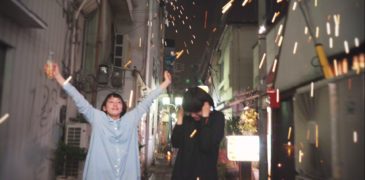

![Mushrooms (2023) Film Review – Unexpecting and Devastating [Fantastic Fest]](https://www.grimoireofhorror.com/wp-content/uploads/2023/09/Mushrooms-cover-365x180.jpg)


